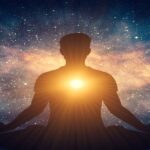There are only two paths of Spiritual progress. That’s what Bhagwad geeta says in its 3rd Adhyaya. And those are Karma and Samkhya ie Jnyana. Everybody is qualified for path of Karma because whoever has Karmendriyas that is 5 organs of karma, he will be able to follow the path of Karma.
But its not the same for Jnyana. You need to qualify the threshold level of Logic, open mindedness to pursue on this path. Though you have inclination or interest in this path, still you have to do karma. One more tricky thing about this paths is that if you are layman doing his karma religiously with his fullest efficiency with whatever skill he possess, he will get entry into Jnyana.
So Karma Sadhanas are being done with five organs of Karma. But Jnyana Yoga is being done with only one organ ie.mind.
But if you are follower of opinion that on broader terms Karma is being done on three levels , by Kaya-Vacha-Manasa i.e by body, by speech & by mind, Then Jnyana as a Karma to be done by mind and intellect becomes part of Karma Yoga only. So you have only one path for spiritual progress and that is Karma.
In this perspective, three things namely Karma, Jnyana as sadhana or Jyana Yoga, and Jnyana as a object should be distinguished and to be understood by sadhaka very clearly, in the beginning itself.
Followers of Jnyana yoga doing their sadhana with mahavakyas , Upanishadas or NirvanTrayi assume whatever written in those books is required to be made by heart, that is what ultimate crux of reality is. Seldom they end in lipstick vedanta and start assuming this is what sadhana and its fulfilment is.
Ashtang yoga as told by Patanjali, mantra yoga, Bhakti yoga, tantra yoga even Kriya yoga and many different types of Yogas are all Karma Yogas. They are all called as Anvopaya ie very little means of Karmic effort. Jnyana yoga also starts with karma, A karma of Vichara or Vichara Sadhana.
After initial substantial efforts in Karma, the sadhaka receives some spiritual experience. This experience imparts some knowledge, veil above his identity is removed for a instance, But that glance is so addictive that the sadhaka wants to reach that state again and again. This experience is the function of the tradition a Sadhaka follows or type of Yoga he does. Then actually he decides which is his real path.
In Karma yoga such experiences help sadhaka to annihilate karma samskaras but in Jnyana yoga habit of Logic and rational mind is used to change inclinations of mind and thereby slowly as you progress on the path age-old karma samskaras loosen their grip.
So spiritual experience is not the essential requirement of Jnyana yoga so you are now clear as why it is said that a Guru is must for all Karmic Paths. You need an experience to impart the knowledge or reveal some aspect of reality. So you need proven path of methods and procedures, that’s what Guru donates. In some traditions Guru directly imparts Spiritual Experience called as Shaktipaat. But Jnyana Yoga is not adhered with such requirement of experience. Rather in some traditions of Jnyana Yoga such experiences are treated as mayic or materialistic. So Jnyana yoga or any yoga treated with the methods of Jnyana Yoga doe not need a Guru.
For some sadhakas , they get experience in one path still the attraction for other does not vanishes. They have such Karmic patterns and Samskaras. They need to follow different paths as their Karmic bandhanas unfolds, as their samskaras spring up from their inner being.
So you find there are many paths for your spiritual unfoldment, and also you can find people talking about taking different paths in single lifetime.











0 Comments